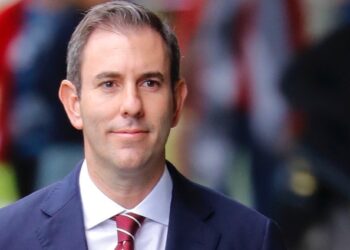Super funds had a “tremendous month” in November, according to new data.
The median growth fund was up 2.5 per cent for the month, benefitting from buoyant share markets led by the US market following the Republican party’s clean sweep victory, Chant West data showed on Thursday.
Meanwhile, the high growth option (81 to 95 per cent in growth assets) and all growth (96 to 100 per cent in growth assets) rose 2.9 per cent and 3.3 per cent, respectively.
The conservative option (21–40 per cent in growth assets) saw returns of 1.5 per cent, while the balanced option (41–60 per cent in growth assets) rose 2.0 per cent.
Based on market movements observed throughout December, and with less than two weeks remaining in the year, Chant West projects the median growth fund return for CY24 to be 11 per cent. Although market fluctuations are inherently unpredictable, a strong outcome appears probable, marking the 12th positive return in the past 13 years, the firm said.
Chant West senior investment research manager, Mano Mohankumar, said that strong share markets have been the main driver of the excellent CY24 return so far, in particular international shares which are up more than 20 per cent this year.
“Growth funds, on average, have 30 per cent invested in international shares and 25 per cent allocated to Australian shares. While not reaching the same heights, Australian shares have still delivered about 13 per cent,” he said.
“The other point to note is that all other asset classes, with the exception of unlisted property, have produced positive returns for the year so far. Given the strength of share markets over the year, super fund members in higher risk portfolios would have fared even better.
“This year’s growth fund result would follow the better-than-expected return for CY23 of 9.9 per cent, making the modest loss of 4.6 per cent in CY22 seem like a distant memory. More importantly, super funds continue to meet their long-term return and risk objectives.”
Chant West further highlighted that since the introduction of compulsory superannuation, the median growth fund has achieved an average annual return of 7.9 per cent, with inflation (CPI) increasing by 2.6 per cent per year over the same period. This results in a real return of 5.3 per cent annually, significantly exceeding the typical target of 3.5 per cent.
Even over the past 20 years, which included three significant market downturns—the GFC (2007–2009), the COVID-19 pandemic (2020), and the high inflation and rising interest rates of 2022—super funds have delivered an average annual return of 7.2 per cent, still well above the standard objective.
“On the risk side, there have only been five negative years over the entire period, which translates to less than one year in every six. Again, funds have done better than their typical long-term risk objective which is one negative return in every five years, on average,” said Mohankumar.




